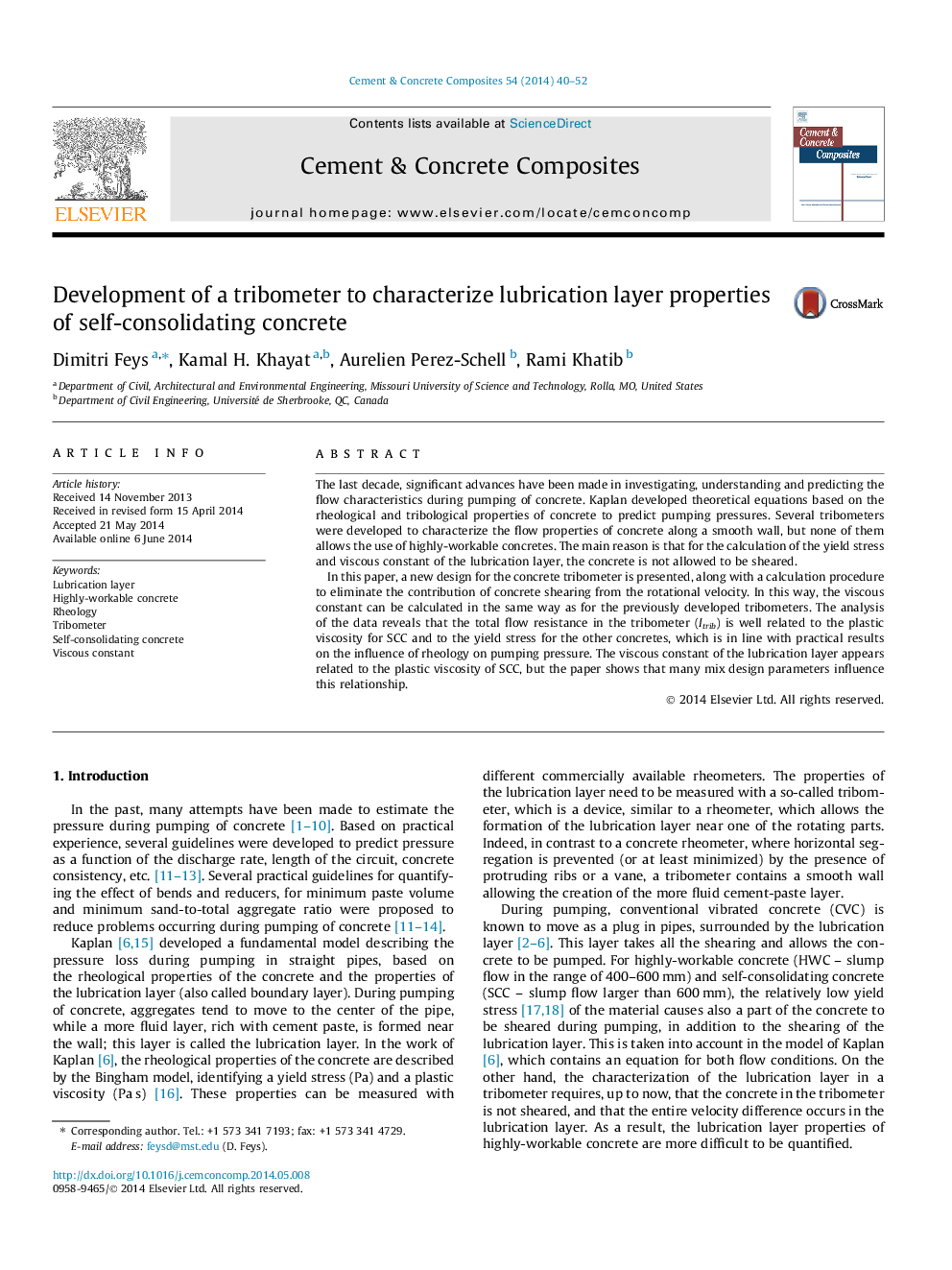| Article ID | Journal | Published Year | Pages | File Type |
|---|---|---|---|---|
| 1454590 | Cement and Concrete Composites | 2014 | 13 Pages |
The last decade, significant advances have been made in investigating, understanding and predicting the flow characteristics during pumping of concrete. Kaplan developed theoretical equations based on the rheological and tribological properties of concrete to predict pumping pressures. Several tribometers were developed to characterize the flow properties of concrete along a smooth wall, but none of them allows the use of highly-workable concretes. The main reason is that for the calculation of the yield stress and viscous constant of the lubrication layer, the concrete is not allowed to be sheared.In this paper, a new design for the concrete tribometer is presented, along with a calculation procedure to eliminate the contribution of concrete shearing from the rotational velocity. In this way, the viscous constant can be calculated in the same way as for the previously developed tribometers. The analysis of the data reveals that the total flow resistance in the tribometer (Itrib) is well related to the plastic viscosity for SCC and to the yield stress for the other concretes, which is in line with practical results on the influence of rheology on pumping pressure. The viscous constant of the lubrication layer appears related to the plastic viscosity of SCC, but the paper shows that many mix design parameters influence this relationship.
